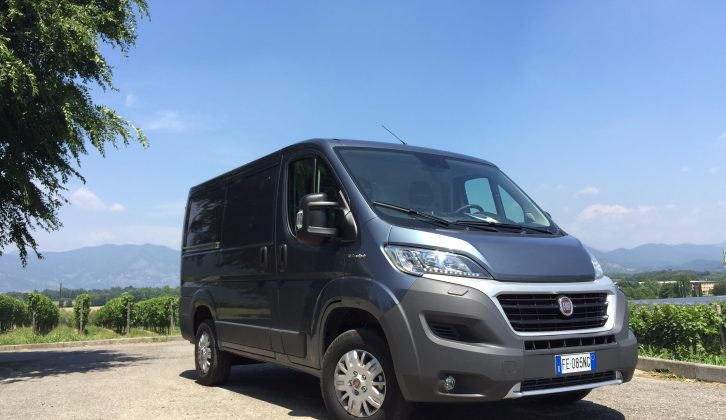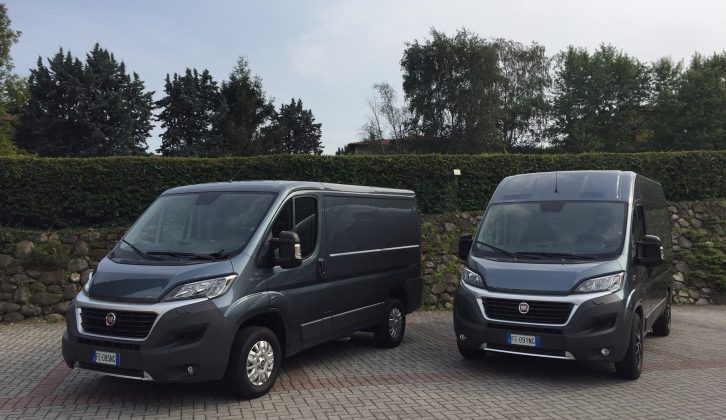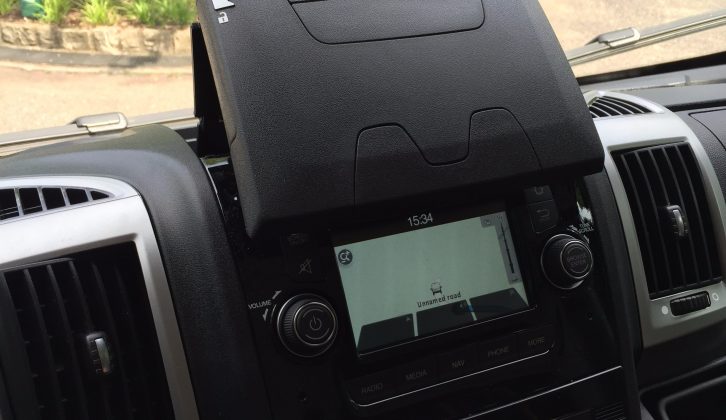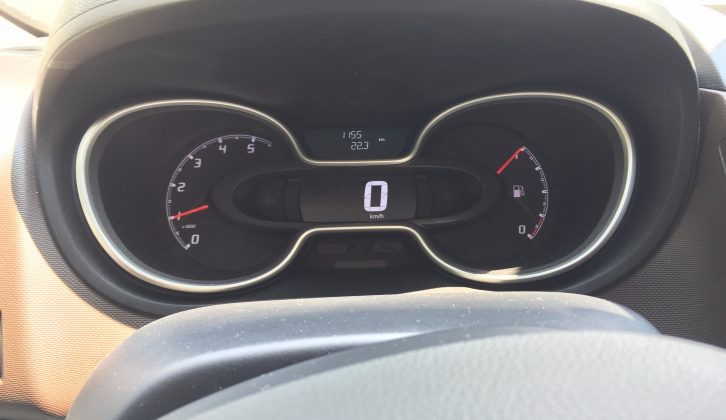As Fiat’s Ducato celebrates its 35th birthday, it enters the 2017 touring season with a brace of new, four-cylinder, Euro 6-compliant engines that, unlike rival Peugeot, doesn’t involve the addition of AdBlue.
The sixth iteration of the van upon which three-quarters of European motorhomes are based employs ‘Low Pressure EGR [exhaust gas recirculation] technology’. This means that the exhaust gases are intercepted after passing through the diesel particulate filter (DPF) and returned to the combustion chamber via a low-pressure circuit. This results in a lower combustion temperature which helps reduce NOx emissions, while the improved efficiency of the turbocharger saves fuel. The new Ducato engines are, claims Fiat, top of their class in terms of delivering high torque at low revs and when it comes to fuel efficiency – qualities motorcaravanners are sure to value.
The entry-level engine is a 2.0-litre unit putting out 115hp and 214lb ft torque. Ideal for campervans, this is paired with a new six-speed manual gearbox and is now available in right-hand drive vehicles, while fuel consumption has been cut by six per cent compared with its predecessor.
All other engines in the range have 2287cc capacities and the first of these, the 130hp variant, is expected to be the best seller. With this you get 236lb ft torque at just 1800rpm, making it a versatile, flexible unit, and it is three per cent better on fuel than its Euro 5 predecessor. The same fuel saving can be expected with the 150hp version which has even more torque (280lb ft) at even lower revs (1500rpm).
Top of the range is a 2.3-litre engine which boasts the same headline figures as the 3.0-litre unit it replaces (namely 180hp and 295lb ft), and couples this with a 20% reduction in fuel economy.
All the 2.3-litre engines can be mated to a six-speed manual or the robotised six-speed ‘ComfortMatic’ auto. The 150 and 180 versions have a new dual-mass flywheel which cuts vibrations for a smoother, more peaceful drive, plus a new reinforced alternator which reduces battery charging time by 10% is now an option. In addition, there’s a Fiat Ducato app that owners can download, for help, support and more.
Also of note are the upgrades to the Ducato’s cabin. Standard items now include a tablet/smartphone holder, ideal for when you’re using it as a sat-nav, 12V and USB ports to keep devices charged, and a pair of cupholders flanking a dedicated smartphone storage space. The small size of the sat-nav/reversing camera screen is the only quibble we have.
On the road
Driving comfort on all new Ducatos is helped by the position of the gearlever on the lower dash, as well as the large wing mirrors, the great visibility from the driver’s seat and the fact that the Ducato steers well. However the steering wheel is only adjustable for reach, not rake.
If you choose the smaller-capacity, 115hp variant, you won’t be shortchanged. This 1956cc unit is a willing, sprightly, rev-happy companion, which is nimble around town and pulls eagerly up hills. It also feels very well-suited to the six-speed manual gearbox. However, on longer drives, its character might become tiresome.
The 150hp 2.3 engine gives a good account of itself, too. While it inevitably lacks the punch of the 180, it has a decent level of go. However, being more strained and therefore more vocal than the 180, might make it a less pleasant companion on long distance drives.
Finally, the 180. It comes as little surprise that the range-topper gives the Ducato more than sufficient pace, with enough in reserve to ensure overtaking isn’t a worry. When not under load it’s quiet, too. Having driven the 180 with the manual and finding that gearbox a little clunky, it was a relief to switch to one fitted with the robotised auto. Although a little slow, ponderous and deliberate with its shifts, it’s a pretty smooth gearbox and while you can shift yourself, it’s best left to its own devices. But, for me, perhaps its biggest plus is that it gave me a better and more comfortable choice of driving position. I’m not awfully tall, and the need to depress the clutch meant on all other Ducatos my left calf bashed the lower dash, but in this auto I could just place my foot on the handy rest.
In other news
As well as presenting the new Euro 6 Ducato and Doblò ranges and launching the new Fiorino, Fiat also revealed its new Talento van, successor to the Scudo, which could be ripe for conversion into a VW T6-rivalling campervan, with up to a 8.6 cubic metre load capacity.
Power comes from a range of single- and twin-turbo diesel engines. And unlike the Ducato, the Talento meets the latest Euro 6 regulations thanks to Selective Catalytic Reduction (SCR) technology, which slashes NOx emissions using AdBlue injection.
The entry-level unit is a 1.6-litre capacity engine with 95hp and 192lb ft torque, and according to official figures, returns 43.5mpg on the combined cycle and 170g/km CO2 – in EcoJet spec with start-stop tech, make that 46.3mpg and 160g/km. With the 1.6 MultiJet you get 120hp, 221lb ft torque, 43.5mpg and 170g/km CO2 emissions. There are also two 1.6-litre twin-turbo EcoJet engines, one offering 125hp accompanied by 236lb ft torque, the other 145hp plus 251lb ft torque.
Driving the Talento feels pleasingly automotive with a smooth and easy-to-live-with manual gearbox, and there’s a usefully-large, clear, digital speedo, too. Visibility from the driving seat impresses, the slender, swept-back A-pillars really helping in this regard. It also has a tight turning circle and the 125hp variant felt nippy. Plus, it comes with a cool key, a small, stylish touch you might not expect in a van.
The new Fiat Ducato engines are top of their class in terms of fuel efficiency and delivering high torque at low revs























